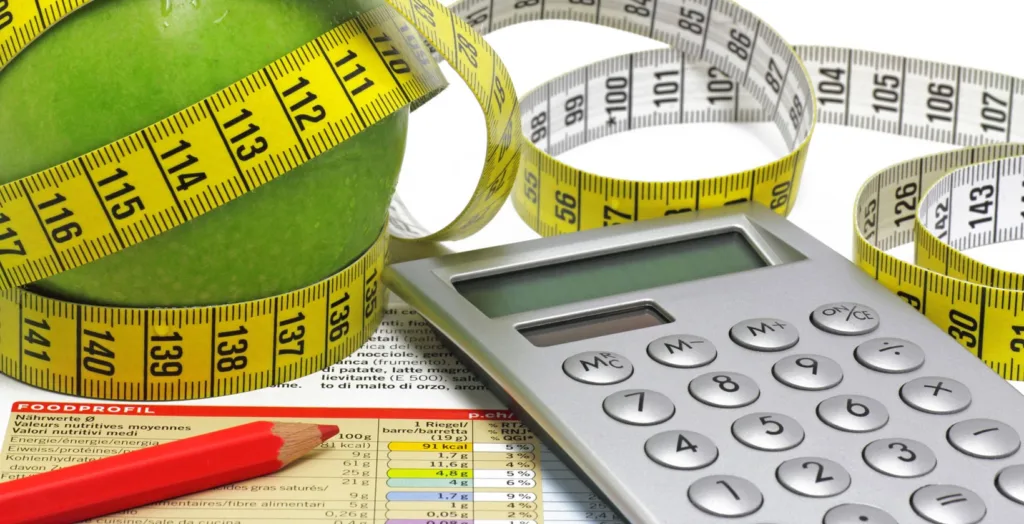Table of contents
Body Mass Index Calculator for Kids and Adolescents

In the meticulous assessment of a child’s body weight through BMI, it is imperative to transcend individual figures. The child’s BMI is intricately compared to the collective average of peers within the same age group, taking into account their distinctive developmental stages. When a child’s BMI exceeds that of 97 percent of counterparts in the corresponding age bracket, an identification of overweight status is made.
To facilitate this evaluation, the BMI Calculator for Kids and Teens steps in, providing swift and cost-free results. This tool serves as a valuable resource, enabling a comprehensive analysis of their weight status by aligning it with age-specific benchmarks.
BMI Calculator for Children and Teens

Please enter your weight in kilograms and your complete height in centimeters. Additionally, we need your gender and age for precise calculations. This BMI calculator not only calculates your Body Mass Index but also estimates Calorie Expenditure and Ideal Weight. If you are 19 years old or older, kindly utilize the standard Adult BMI Calculator.
BMI Percentile Table/Chart for Children and Teens by Age
| BMI Table for Boys 8-18 Years Old: | |||||
|
Percentile
|
|||||
| Age | 5 (Severely Underweight) |
10 (Underweight) |
50 (Normal Weight) |
85 (Overweight) |
95 (Severely Overweight) |
| 8 | < 12.5 | <= 14.2 | 14.3 – 19.2 | >= 19.3 | > 22.6 |
| 9 | < 12.8 | <= 13.7 | 13.8 – 19.3 | >= 19.4 | > 21.6 |
| 10 | < 13.9 | <= 14.6 | 14.7 – 21.3 | >= 21.4 | > 25.0 |
| 11 | < 14.0 | <= 14.3 | 14.4 – 21.1 | >= 21.2 | > 23.1 |
| 12 | < 14.6 | <= 14.8 | 14.9 – 21.9 | >= 22.0 | > 24.8 |
| 13 | < 15.6 | <= 16.2 | 16.3 – 21.6 | >= 21.7 | > 24.5 |
| 14 | < 16.1 | <= 16.7 | 16.8 – 22.5 | >= 22.6 | > 25.7 |
| 15 | < 17.0 | <= 17.8 | 17.9 – 23.0 | >= 23.1 | > 25.9 |
| 16 | < 17.8 | <= 18.5 | 18.6 – 23.6 | >= 23.7 | > 26.0 |
| 17 | < 17.6 | <= 18.6 | 18.7 – 23.6 | >= 23.7 | > 25.8 |
| 18 | < 17.6 | <= 18.6 | 18.7 – 23.9 | >= 24.0 | > 26.8 |
| BMI Table for Girls 8-18 Years Old: | |||||
|
Percentile
|
|||||
| Age | 5 (Severely Underweight) |
10 (Underweight) |
50 (Normal Weight) |
85 (Overweight) |
95 (Severely Overweight) |
| 8 | < 12.2 | <= 13.2 | 13.3 – 18.7 | >= 18.8 | > 22.3 |
| 9 | < 13.0 | <= 13.7 | 13.8 – 19.7 | >= 19.8 | > 23.4 |
| 10 | < 13.4 | <= 14.2 | 14.3 – 20.6 | >= 20.7 | > 23.4 |
| 11 | < 13.8 | <= 14.6 | 14.7 – 20.7 | >= 20.8 | > 22.9 |
| 12 | < 14.8 | <= 15.6 | 15.7 – 21.4 | >= 21.5 | > 23.4 |
| 13 | < 15.2 | <= 16.0 | 16.1 – 22.0 | >= 22.1 | > 24.4 |
| 14 | < 16.2 | <= 17.0 | 17.1 – 23.1 | >= 23.2 | > 26.0 |
| 15 | < 16.9 | <= 17.6 | 17.7 – 23.1 | >= 23.2 | > 27.6 |
| 16 | < 16.9 | <= 17.8 | 17.9 – 22.7 | >= 22.8 | > 24.2 |
| 17 | < 17.1 | <= 17.8 | 17.9 – 23.3 | >= 23.4 | > 25.7 |
| 18 | < 17.6 | <= 18.3 | 18.4 – 23.4 | >= 23.5 | > 25.0 |
Interpretation of BMI Percentile:
| Percentile < 5: | Severely Underweight |
| Percentile <= 10: | Underweight |
| Percentile = 50: | Normal Weight |
| Percentile >= 85: | Overweight |
| Percentile > 95: | Severely Overweight |
Child’s BMI table according to Coners, Hebebrand, Hesecker, Himmelmann, Remschmidt, Schaefer, 1996.
Complete Guide to Calculating and Interpreting BMI in Children and Adolescents
What is BMI?

Body Mass Index (BMI) is an indicator used to assess whether a person’s weight is appropriate for their height. It is used for both Children and Adolescents to monitor their growth and development. Its application to children and adolescents introduces a layer of complexity, requiring careful consideration of various factors beyond height and body mass.
Variations of Development
When it comes to assessing a child’s body weight using BMI, complexities call for expert guidance. Seeking the advice of a pediatrician is not only recommended; it is crucial to navigating the subtleties of childhood development and ensuring accuracy in assessment.
Expert Perspective: Discovering Adverse Consequences
A pediatrician’s role extends beyond simple assessment; it involves a subtle understanding of possible adverse consequences. Through rigorous assessments, medical professionals discern the subtleties of a child’s growth and development, ensuring a comprehensive interpretation of BMI results.
How is BMI calculated in Children and Adolescents?
The calculation of BMI in Children and Adolescents is done using the standard formula:
BMI Calculator for Kids
There are many online calculators that can help determine BMI for Children and Teens. These take into account the child’s age and gender to provide an accurate interpretation. A BMI Calculator for Children and Teens can be found here .
BMI Chart for Children and Adolescents

BMI tables are used to compare a child’s BMI results with standard values for their age and sex. These charts help identify children who are underweight, normal weight, overweight or obese. For example, a BMI chart for baby girls may look different than a BMI chart for baby boys due to differences in growth and development.
In the intricate landscape of childhood health, a pediatrician’s touch elevates BMI Interpretation. Their expertise ensures not just accuracy but a meaningful understanding of how BMI aligns with a child’s unique growth journey. Collaborating with these professionals is key to unlocking the full potential of BMI assessment in minors.
Interpretation of BMI in Children and Adolescents
The interpretation of the BMI in Children and Adolescents is done according to the percentile in which they fall:
- Sub 5%: Underweight
- 5%-85% : Normal weight
- 85%-95% : Overweight
- Over 95% : Obese
Children who exceed the 97th percentile in BMI, compared to peers of the same sex, are classified as overweight . Conversely, those in the bottom 3% with a low BMI are considered underweight .
Percentile Calculator for Children and Teens
A percentile calculator can be used to determine what percentile a child’s BMI falls in compared to other children of the same age and sex. This is essential to better understand the health status of the child.
Importance of BMI monitoring in Children and Adolescents
Monitoring your BMI is essential to ensure healthy growth and prevent health problems associated with being overweight or underweight. For example, a child weight calculator can help parents track their child’s weight over time.
Other useful calculators for Children and Teenagers

In addition to the BMI calculator, there are other useful tools for monitoring children’s health:
- Child percentile calculator : Determines the child’s weight and height percentile.
- Baby Weight Calculator : Helps to monitor the growth of babies.
- Children’s height calculator : Estimates the child’s future height.
- Children’s calorie calculator : Helps to determine the daily calorie requirement for children.
- Children’s kg calculator : Monitors children’s weight in kilograms.
- Children’s body mass index calculator : Helps to evaluate weight in relation to height.
Useful resources
- BMI Calculator : BMI Calculator for Children and Teens
- BMI Chart : BMI Chart for Children and Adolescents
- Guide to interpreting BMI : Interpreting BMI Percentile
- How to Prevent and Manage Obesity in Children
- Understanding WHO Growth Standards for Children and Adolescents
- How to Calculate BMI by Manually
- Growth Chart on WikiPedia
Frequently asked questions:
BMI for Kids and Teenagers, also known as Body Mass Index, is a measurement that assesses a young person’s body weight in relation to their height. It is an important tool to determine if a Child or Teenager has a healthy body weight.
The BMI Calculation for kids and teenagers is similar to adults but takes into account age and sex. It is calculated using the formula: BMI = (weight in kg) / [(height in meters) x (height in meters)]. Specific BMI-for-age growth charts are then used to interpret the results.
BMI is crucial for assessing the growth patterns of children and teenagers. It helps identify potential weight-related health risks and provides a basis for discussions about nutrition and lifestyle.
Using a BMI calculator for kids and teenagers is simple. Enter the child’s weight, height, age, and gender(boy or girl) into a reliable BMI calculator designed for this age group. The calculator will then provide a BMI value and indicate its position on the growth chart.
BMI results are interpreted based on percentile ranges, indicating whether a child or teenager is underweight, has a normal weight, is overweight, or is obese. These percentiles help assess the individual’s position relative to their peers.
Ideal weight can vary, and it’s not solely determined by BMI. Healthcare professionals consider various factors such as growth patterns, age, and individual health. It’s important to consult with a pediatrician to assess the overall well-being of a child or teenager.
While BMI itself does not directly measure metabolic rate, it serves as an important indicator for assessing overall health. For a comprehensive evaluation of metabolic rate, additional assessments may be required.
Regular BMI checks are recommended during routine health check-ups. However, the frequency may vary based on individual circumstances. Consult with a pediatrician for guidance on when and how often to monitor BMI.
The percentile table allows healthcare professionals to determine where a child or teenager falls in terms of BMI compared to their peers. It categorizes individuals into percentiles, such as underweight, normal weight, overweight, or obese, aiding in the identification of potential health concerns.
Percentiles on the BMI table indicate the relative position of a child’s or teenager’s BMI compared to others in the same age group and gender. A higher percentile suggests a higher BMI compared to peers, while a lower percentile indicates a lower BMI.
Parents can interpret BMI percentiles by locating their child’s BMI on the table and identifying the corresponding percentile. Healthcare professionals can then provide guidance on what the percentile range means for the child’s growth and health.
Yes, the BMI percentiles derived from the Children’s BMI Table by Coners et al. (1996) can indicate potential health implications. For example, percentiles outside the normal range may suggest a need for further assessment and intervention.
Yes, the Children’s BMI Table is designed to assess BMI for both children and teenagers. It provides age-specific percentiles that are applicable during the adolescent years.
There are various BMI percentile tables available, and healthcare professionals may choose a specific table based on factors such as population characteristics and applicability to regional or national standards. The choice may depend on the specific needs and context of the assessment.
Remember, BMI is just one tool among many for assessing health, and it should be interpreted alongside other factors for a comprehensive understanding of a child’s or teenager’s well-being. Always seek guidance from healthcare professionals for personalized advice. Always consult with healthcare professionals for accurate interpretation and guidance regarding BMI percentiles, taking into account the specific growth chart used for assessment.